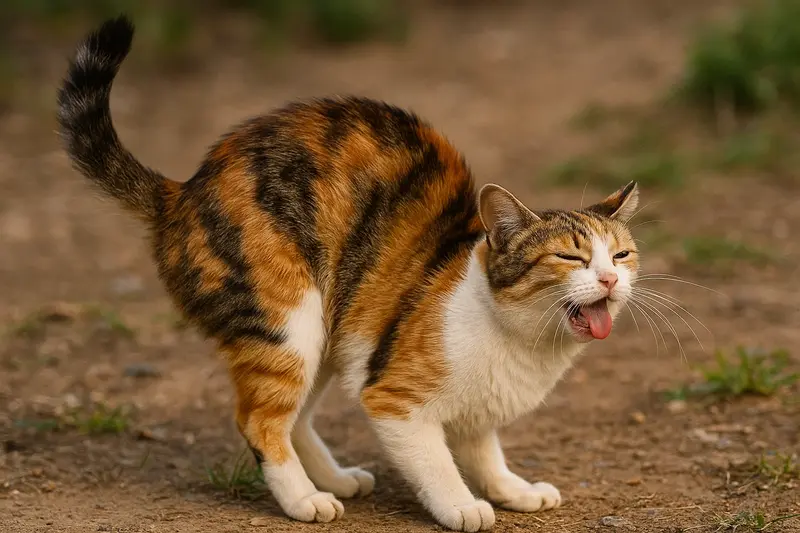In the life cycle of a cat, the heat cycle (estrus) is a significant and complex physiological stage. For pet owners with female cats, understanding the behavioral and physical changes during this period is crucial—not only to care better for their feline companions, but also to prevent potential issues. As a professional pet expert, this article provides a detailed look at the signs and symptoms of a female cat in heat.

Most female cats experience their first heat between 5 to 10 months of age. The timing can vary depending on the individual and breed. Short-haired cats like Siamese may go into heat earlier, while long-haired breeds like Persians may experience it later.
A female cat’s heat cycle includes the following phases:
Proestrus: Lasts 1–2 days; subtle behavioral changes but the cat is not yet receptive to mating.
Estrus: Lasts 4–10 days; the most obvious stage, when the cat actively seeks a mate.
Interestrus: If mating doesn’t occur, the cat enters a rest phase lasting 7–14 days before cycling again.
Anestrus: A dormant period, usually in winter, when hormone levels are low and heat symptoms are absent.
One of the most common signs of a cat in heat is frequent and loud meowing, often described as yowling. These vocalizations are typically more intense at night and are meant to attract male cats.
Cats in heat often rub themselves against furniture, walls, and even human legs. They are marking with scent glands and showing signs of affection and readiness.
Cats that are normally independent may become clingy and affectionate. They may purr more, roll on the ground, knead with their paws, and constantly seek attention from their owners.
When touched on the back, a cat in heat may crouch, elevate her rear end, shift her tail to the side, and display a mating position. This behavior indicates she is ready to mate.
Due to the swelling or slight discomfort in the genital area, female cats may lick their vulva more frequently than usual.
Some female cats try to run away from home during heat in search of a mate. This behavior is especially common in unspayed indoor cats.
Although not as pronounced as in dogs, a female cat’s vulva may appear slightly swollen and pink during estrus.
There may be a small amount of clear vaginal discharge. Any pus-like or foul-smelling discharge should be evaluated by a veterinarian, as it may indicate infection.
Cats in heat may exhibit signs of stress, including restlessness, reduced sleep, and occasional loss of appetite.
If a cat experiences repeated heat cycles without mating or spaying, the risk of reproductive issues such as pyometra (uterine infection) and mammary gland tumors increases.
Persistent yowling, spraying, and agitation can become a nuisance to owners and even neighbors.
Spaying is the most effective and humane solution for managing heat cycles. It eliminates heat-related behaviors and significantly reduces the risk of certain cancers and infections.
Spending more time playing and comforting your cat can help ease her anxiety during heat.
Keep doors and windows closed to prevent escape and limit exposure to male cats, which can trigger or worsen heat behaviors.
Pheromone sprays or diffusers can provide mild relief by creating a calming environment, though they are supportive rather than curative.
A female cat’s heat cycle is a natural and important part of her life, but it also brings a host of behavioral and health concerns. By recognizing the signs and knowing how to respond, pet owners can better support their feline friends. Whether you choose to allow your cat to breed or opt for spaying, the most important thing is to provide understanding, comfort, and proactive care.
After all, behind every yowl and affectionate nudge during heat lies a natural instinct—and a cat simply seeking connection and comfort in her own unique way.
animal tags:
We created this article in conjunction with AI technology, then made sure it was fact-checked and edited by a Animals Top editor.